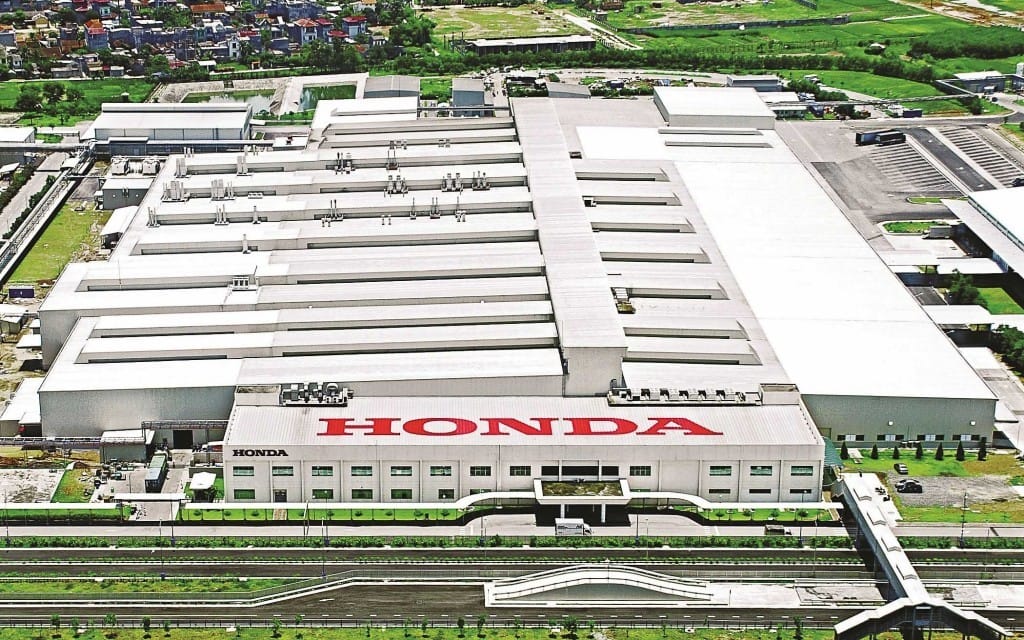Key Takeaways:
I. HMSI's impressive sales growth is contextualized by a recovering market, highlighting the need to analyze market share dynamics against key competitors like Hero MotoCorp.
II. While HMSI dominates the scooter segment with the Activa's success, the company must accelerate its EV transition to address evolving consumer preferences and regulatory pressures.
III. HMSI's growing export performance offers a strategic pathway to diversify revenue streams and mitigate risks associated with the volatile domestic market.
Honda Motorcycle & Scooter India (HMSI) reported a resounding 32% increase in sales for 2024, reaching 5.8 million units. While this achievement merits acknowledgement, a deeper examination reveals a more complex narrative. The Indian two-wheeler market, a maelstrom of competitive forces and evolving consumer preferences, presents both opportunities and challenges. This analysis delves beyond the headline numbers to dissect the factors driving HMSI's growth, scrutinizing its market position, product strategy, and export performance. We challenge the simplistic narrative of unbridled success by exploring the competitive pressures, technological disruptions, and strategic imperatives that will shape HMSI's future trajectory.
Market Share Dynamics and Competitive Pressures: Deconstructing HMSI's Position
HMSI's 32% sales growth, culminating in 5.8 million units in 2024, must be analyzed within the context of the broader Indian two-wheeler market. The market itself experienced a resurgence, expanding from 15.9 million units in the previous year to nearly 18 million units in 2024. This overall growth provides a favorable backdrop for HMSI's performance, but it also raises critical questions about the company's market share and competitive standing.
Hero MotoCorp, with a 31% market share in FY2024, retains its position as the market leader, posing a significant challenge to HMSI. While HMSI boasts a 44.65% market share in the first seven months of 2024, a marginal increase from 44.43% in the same period of the previous year, this figure is largely driven by its dominance in the scooter segment. The presence of other strong competitors like Bajaj Auto and TVS Motor Company further intensifies the pressure on HMSI to secure and expand its market share.
Macroeconomic factors and government policies play a crucial role in shaping the competitive dynamics of the Indian two-wheeler market. Rising disposable incomes and rapid urbanization, with a 1.5% year-on-year increase in 2021, are driving demand for personal mobility solutions. Simultaneously, government initiatives promoting electric vehicles are influencing consumer preferences and accelerating the transition towards sustainable transportation. These external forces create both opportunities and challenges for HMSI.
To navigate this complex landscape, HMSI must adopt a data-driven approach to understand evolving consumer preferences and anticipate market shifts. Strategic differentiation through product innovation, targeted marketing campaigns, and a focus on specific consumer segments will be crucial for HMSI to not only maintain but also expand its market share in the face of intense competition.
Product Portfolio Strategy: Balancing ICE Dominance with the EV Imperative
HMSI's stronghold in the scooter segment, with a 44% market share between April and November 2024, is largely attributed to the success of the Activa. Sales of the Activa (110cc and 125cc variants) reached 2.18 million units during this period, marking a 21% year-on-year increase. This dominance in the scooter market is a significant asset for HMSI, but it also presents a strategic challenge in a market undergoing rapid transformation.
While ICE vehicles currently dominate the Indian two-wheeler market, the shift towards electric mobility is gaining momentum. Government incentives, increasing environmental awareness, and the rising cost of fossil fuels are driving consumer interest in electric two-wheelers. This evolving consumer landscape necessitates a strategic recalibration of HMSI's product portfolio to address the growing demand for sustainable transportation solutions.
HMSI's current presence in the EV segment is limited, with the majority of its sales still coming from ICE vehicles. However, the projected growth of the Indian two-wheeler market to 86.4 million units by 2032, with a CAGR of 16.29% during 2024-2032, is expected to be driven significantly by EV adoption. This presents a critical opportunity for HMSI to accelerate its EV strategy and develop a compelling portfolio of electric two-wheelers.
Note: Data on sales mix by vehicle type and engine capacity is unavailable.
HMSI must adopt a dual-pronged approach, balancing its continued optimization of ICE vehicles with strategic investments in EV technology and product development. This involves not only introducing new electric models but also integrating advanced features, improving battery technology, and expanding charging infrastructure to cater to the evolving needs of EV consumers.
Export Strategy: Tapping into Global Growth Opportunities
HMSI's export performance, with 508,522 units shipped in 2024, represents a promising avenue for growth and diversification. This performance aligns with the broader trend in the Indian two-wheeler export market, which witnessed a remarkable 22% year-on-year jump, reaching 3,602,151 units during the first 11 months of 2024. This surge in exports indicates a growing global demand for Indian-manufactured two-wheelers, creating a significant opportunity for HMSI to expand its international presence.
A strategic focus on exports is crucial for HMSI's long-term sustainability and resilience. By diversifying its revenue streams beyond the domestic market, HMSI can mitigate risks associated with economic fluctuations, regulatory changes, and intensifying competition within India. Furthermore, expanding into international markets enhances brand visibility, provides access to new technologies and consumer insights, and strengthens HMSI's position as a global player in the two-wheeler industry.
Strategic Roadmap: Navigating the Future of Two-Wheelers
HMSI's 32% sales surge in 2024 is a commendable achievement, but it's merely a stepping stone in a dynamic and rapidly evolving market. To maintain its growth trajectory, HMSI must adopt a proactive and adaptive strategy. This involves navigating the competitive landscape by focusing on market share growth, balancing its ICE dominance with a robust EV transition, and strategically expanding its presence in international markets. By embracing data-driven decision-making, prioritizing continuous innovation, and understanding the evolving needs of consumers, HMSI can position itself for sustained success in the ever-changing world of two-wheelers.
----------
Further Reads
I. India Two Wheeler Market Size & Share Analysis - Industry Research Report - Growth Trends
II. India 2-Wheeler Market Size, Share, Growth and Forecast 2032
III. Two Wheeler Sales May 2024 - Hero, Honda, TVS, Bajaj, Suzuki, Royal Enfield

